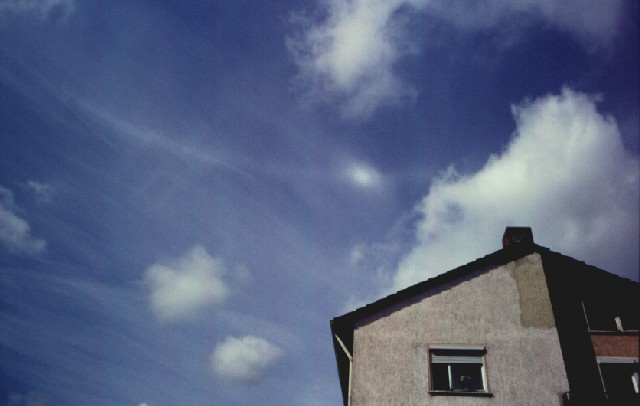- Crystal orientation:
- Basis horizontal
- Path of light:
- 1-3-8-2
- Occurrence:
- rarely
1-2 days a year
EE 18/19

Description:
120°-parhelia can be found at the same elevation like the sun, but at an angle of 120°. In most cases they appear together with the parhelic circle, standing out against it as white brightenings. If the parhelic circle is also visible, the 120°-parhelia can be found relatively easily. But they do not appear always together with the parhelic circle, as the parhelic circle can be generated by plate-shaped as well as by column-shaped ice crystals. The 120°-parhelia, however, do appear only when there are plate-shaped ice crystals. If a parhelic circle is caused by columnn-shaped ice crystals, you will look for 120°-parhelia in vain. Using the other halos visible together with the parhelic circle as a kind of "helpers", one can see quite well which crystals the parhelic circle is caused by. A bright upper tangent arc or circumscribed halo is a good hint on column-shaped crystals. 120°-parhelia can also appear without a parhelic circle being visible. When there are bright sundogs visible, you can also reckon with the appearing of 120°-parhelia.
Formation:
120°-parhelia are caused by horizontally orientated plate-shaped ice crystals. Hereby the sunlight enters the upper base face of the crystal, is then reflected from an adjacent prism face and finally leaves the lower base face. For this the ice crystals have to be relatively thick as otherwise only few light rays are reflected from the inner prism face.


